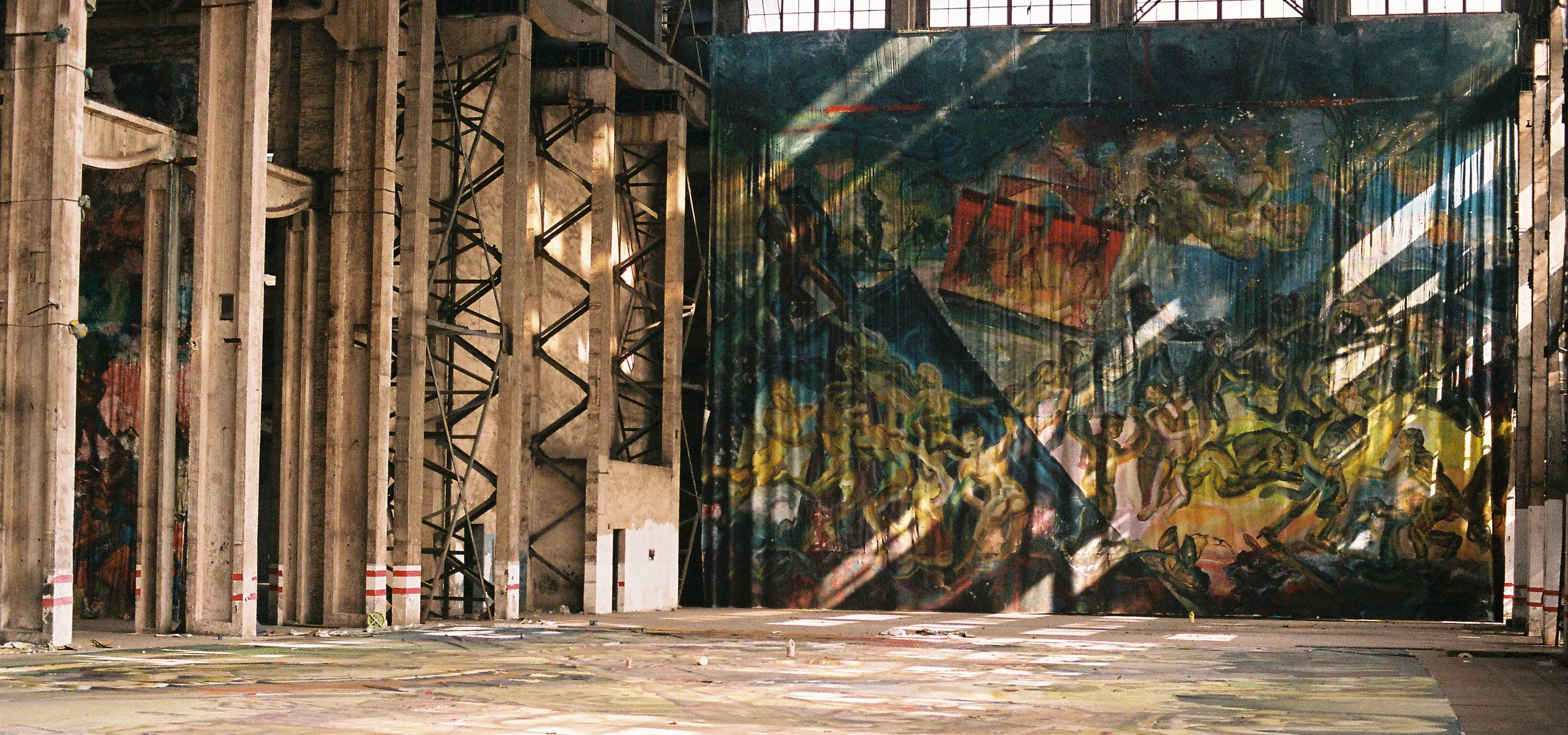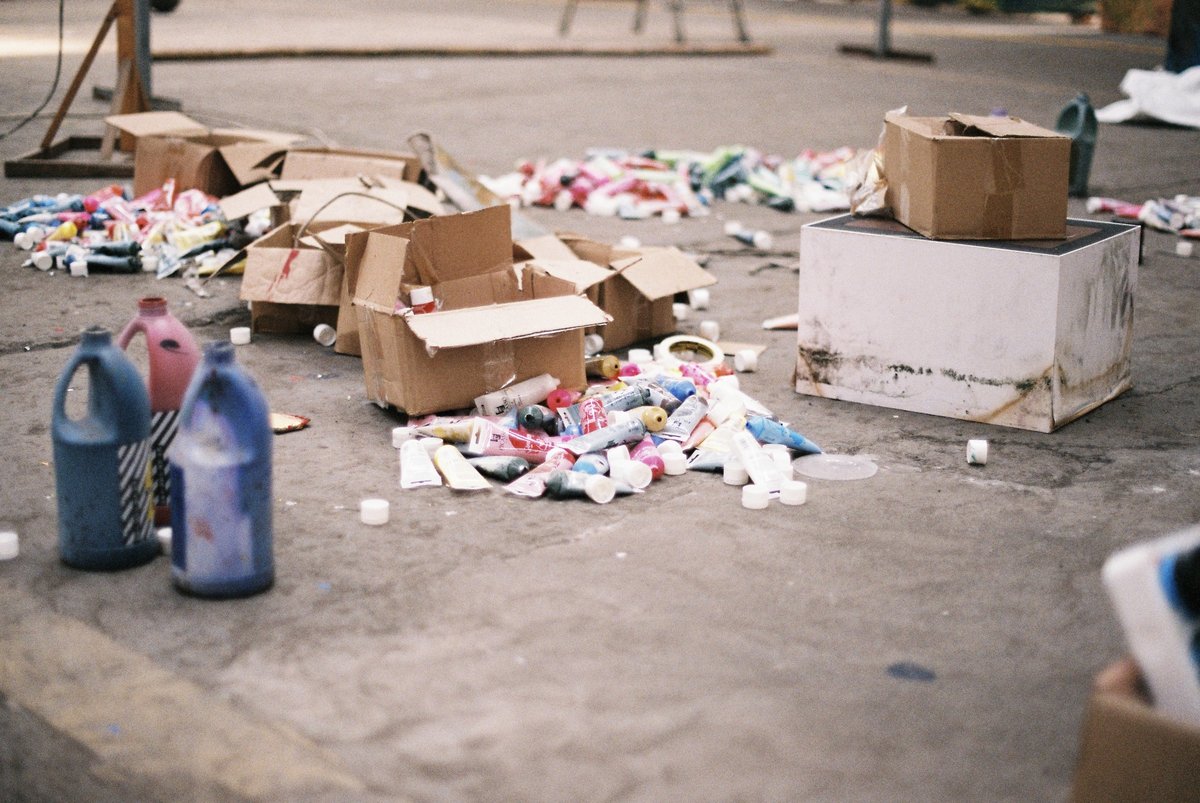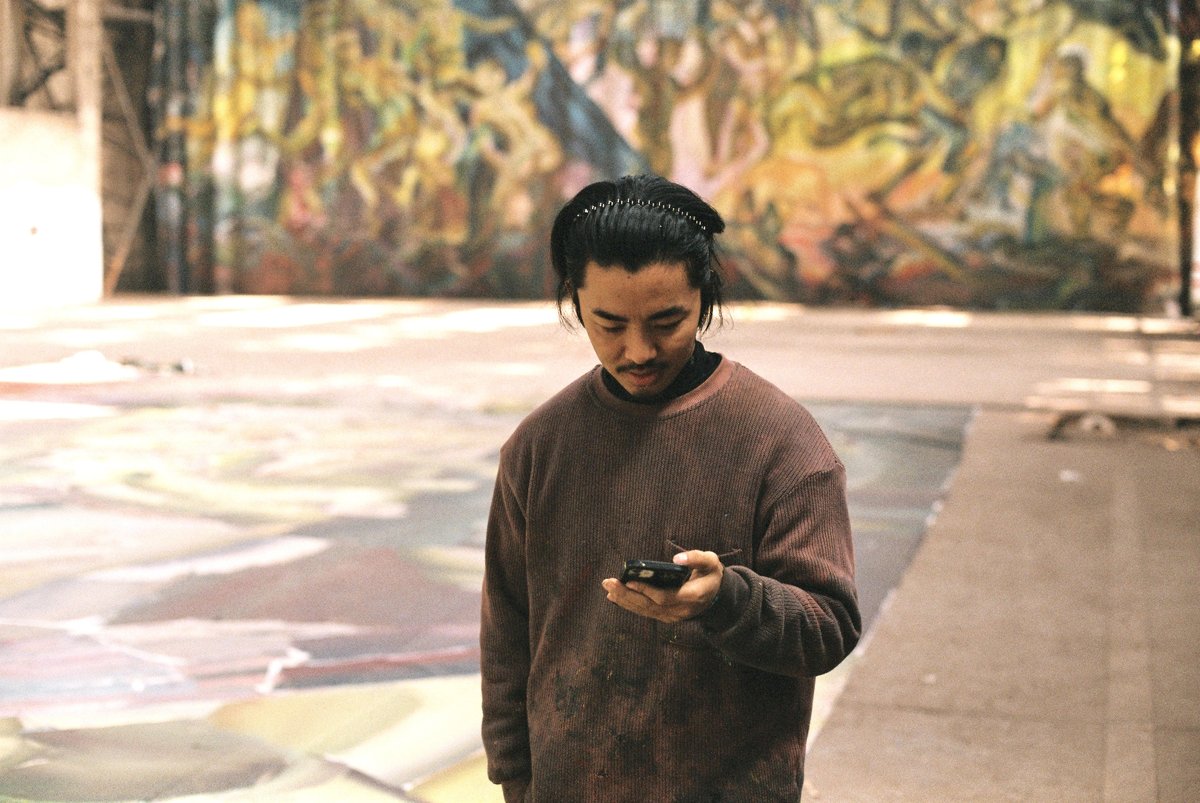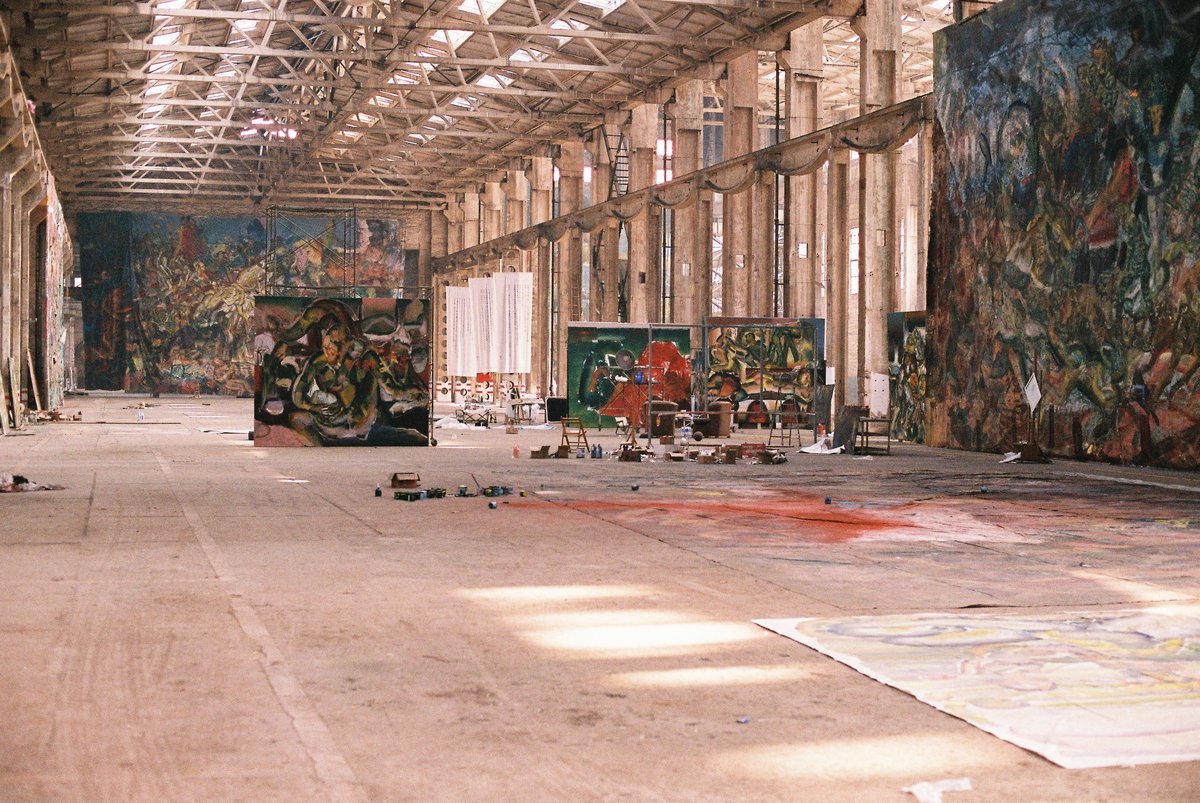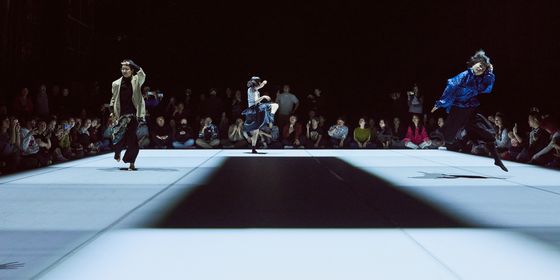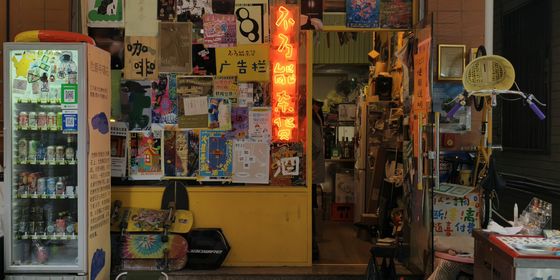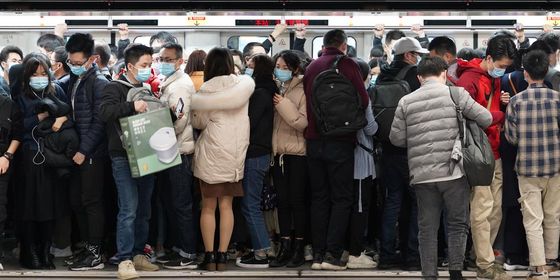Shuare Shizhu blends his rural Yi heritage with bold, urban strokes informed by the absurdities of modern life
We’re in a restaurant a short drive from Shuare Shizhu’s workshop. The 31-year-old painter is entertaining a young Chinese art dealer and his entourage with whom he had just had a long conversation about destiny and rebirth. “I must have been a pig in a previous life,” he says with a cheeky smile, biting his lower lip.
A pig makes sense. This most carefree and hedonistic of animals—one of the only species that have sex for pleasure—takes us right to the core of Shuare’s art and creative process. Over 2,000 years ago, the Roman poet Horace used the pig in his writing as a symbol for a liberated and happy life close to nature—yet now we look down on the pig; we despise it for its mud baths all the while spending top dollar to smear the same stuff on our faces.
Such themes of desire and liberation from the absurdities of modern life resonate strongly with Shuare and his work—for which he found himself a 30,000-square-meter factory-turned-workshop on the northeastern outskirts of Chengdu.
Creative haven
After one and a half hours on the road, my taxi driver takes the Jintang county exit off the highway and drives the final stretch to the remote location Shuare had sent me. Before the red brick factory halls of this former metalware processing plant and its chimneys pierce through the haze, the workers’ old residential compound comes into view.
Dilapidated six-story dormitory buildings, mostly abandoned, around a central canteen—with an old notice telling workers of rising meat prices still posted to the door—tell of better times. “The factory was shut down in 2009, a few of us are still here. They’re growing some crops over there. There’s nothing better to do here now,” a former worker tells me with a thick Sichuan accent as I approach the factory halls. “The artist? Right, he’s in that building over there.”
“Container Sub-Factory” read large sun-bleached letters above the entrance. The heavy metal doors open to an enormous space. The main hall is perhaps 50 meters wide, 150 meters long, and 15 meters high—with the early afternoon sun coming in through large windows at the top to illuminate giant canvases the size of basketball courts suspended from the ceiling. Dozens of smaller artworks hang from walls or stand on makeshift easels throughout the factory. Much of it looks unfinished—Shuare sometimes works on 10 canvases at the same time. There is no artificial lighting in the factory and Shuare can only paint between sunrise and sunset, like the farmers working the fields in his home village.
There are empty bottles of paint and other utensils scattered about. In the middle of it appears Shuare, dressed in a paint-splattered dark shirt and pants. “You’re here already. I didn’t think you would find it yourself,” he says with a grin, motioning toward a small table surrounded by a few cushioned chairs. There are packs of cheap smokes on the table, along with tea, a few snacks, and empty food delivery trays—his cozy little base of operations in the middle of this otherwise bleak-looking concrete stronghold.
Shuare is of Yi ethnicity, with nine million people, the seventh largest of China’s 55 minority ethnic groups. He was born in rural Sichuan, in a small village in Mabian county. “I only really started speaking Mandarin when I was 18, before that it was all my native Yi language,” he tells me about his rural upbringing. Shuare first started dabbling with painting in high school and formally began pursuing it in 2012 at the Sichuan Conservatory of Music—a renowned art school in Chengdu. There, he was drawn to working on large canvases for their ability to instill him with a desire to act and bear the physical strength he cultivated walking the hills and working the fields of his village since childhood, he says. He graduated with a master’s degree in painting in 2020 and found the abandoned factory shortly after through a friend.
“When I first came here the door was locked, I had to break in and there was nothing in here. I felt the area was unsafe so I went to another smaller workshop in the back and started painting there,” he says. But security guards soon found out and began pestering him. He eventually signed a rental agreement with the owner of the premises—the metalware company Xinxing Cathay International Group. He pays around 2,000 yuan a month for the enormous space but is contractually responsible for his own safety.
Defying Norms
“Do many people know about Kiefer in Germany?” Shuare asks as we take a tour through the factory and walk past one of his giant canvases, which weighs more than a ton and requires dozens of people to hoist up with makeshift pulleys. “I really love that massive workshop of his,” he says.
The German painter and sculptor Anselm Kiefer, born in 1945, is known for his 40-hectare residence in France which he turned into an artist’s playground over several decades—with multiple workshops housing his massive installations, including a system of underground tunnels to work in. A lot of Kiefer’s artworks refer to the ruins of post-war Germany where he grew up. He likes the rubble because it’s the most unadulterated source material to him, from his childhood—before social norms and value systems began exerting their full power on the mind. Besides their large “playgrounds” for creation, it’s this Freudian spirit that connects the two artists.
Like Kiefer, Shuare draws on his childhood experiences in rural Sichuan. The lingqi in his paintings—a Chinese word to describe the artistic quality, the “cleverness” of a work of art—springs from his desires, he says. His earlier works, much smaller in size, are depictions of rural village life; portraits of village elders engaged in arcane ritual, or his family with deeply furrowed faces and hands painted so intricately that it feels like getting a glimpse of the life that has left those marks.
His later works are more surreal, the villagers are still recognizable, but their bodies are limp and begin to contort into strange shapes. Men suck on bones. A woman looks like she wants to join the bone-sucking action, but she is held back by a young child grabbing onto her leg. “When I go back to my village these days, it seems like people are denying their essence, they’re suppressing their real desires, betraying themselves,” he says later at dinner, telling the story of a childhood friend caught in a loveless marriage at home. His larger works are painted on the ground, sometimes using brooms and mops to spray, splash, and scrape large amounts of oil paint, acrylic, lacquer, and other materials onto the canvas. “I don’t see large-scale painting as something confined to a canvas or even a certain space, it’s a practice that will let you expand the limits of your body, expand your boundaries,” he said about his creative process in a 2023 interview with China News.
Shuare hasn’t signed with a gallery because he fears handing over control, creating more of the limitations and boundaries he is trying to escape from. “This interview, for example, would have to be signed off by the gallery,” he says. There are other hints at what working within a more formal setting would mean. For example, the half-erect penis of a contorted male figure in one of his paintings is slightly blurred out—a change Shuare made later, presumably to make it less explicit and get it ready for an exhibition. He’s had two large ones so far—one inside his own space, and one in a factory in Shanghai large enough to hold his giant works.
In these larger, more abstract works, where bodies are still discernible, they turn into plasticine, shifting and molding into larger shapes. “They lose the original energy of their bodies, becoming as cold and indifferent as concrete. They also forget the emotions and warmth that exist beyond morals and law, which sometimes depresses me,” Shizhu mused in an article about one of his exhibitions last year. The struggle with limitations and boundaries is present even in the creative process itself. There are the tiny paint tubes, for example. “Sometimes I spend half a day just squeezing out the paint from hundreds of tubes before I can get to work,” he tells me, “But some colors I only have in those tubes, like this red one I like.” The larger paint bottles hold more paint, but for his largest works, he may still need hundreds of those. The canvases themselves are patchworks. He buys individual pieces and stitches everything together himself. Everything is sourced directly from an art supplier and then shipped to him through the truck-hailing service Huolala. “One canvas alone costs around 10,000 yuan,” he tells me.
Shuare may not have signed with a gallery, but with basic costs this substantial, completely staying away from the art world is impossible. He sells his smaller artworks, those that could fit on a wall or exhibition space, to a few collectors he knows personally. “The people I sell to are my friends...This is how I want to slowly build my network of collectors on my own terms.”
But the more exposure and recognition he gets, the more Shuare is getting dragged into the art world he is keeping his distance from. He tells of fake gallery owners from abroad reaching out to him to scam him out of his money. A deluge of interview requests from people trying to milk him for content. And the negative comments on social media, where he occasionally posts things on his Xiaohongshu or comes across articles about him. “How about you learn how to paint on small canvases first,” reads one of the bitter remarks under a story about him on WeChat. “I don’t pay too much attention to this, but of course, this does affect my mood,” he says.
As evening falls, we sit in a taxi back to Chengdu so Shuare can meet another of his friend-collectors, the wife of a famous classical musician. The artist has changed his paint-splattered work clothes for a suave evening outfit, put on a pleasant perfume, and bought flowers to give to the musician after the performance. He may have escaped to the outskirts of Chengdu, but he still knows how the art world works.
“When you go back to Beijing, go ahead and write about the fool you met here in the middle of nowhere, I don’t mind,” he tells me in the taxi. That cheeky grin breaks across his face. I can’t help but smile myself. Maybe it’s me who is the fool, accepting too much of modern life’s foolishness as normal without questioning it. But Shizhu the former pig—also one of the smartest animals, by the way—may help me do just that.
Beyond the Frame: Shuare Shizhu’s World in Wide Strokes is a story from our issue, “Education Nation.” To read the entire issue, become a subscriber and receive the full magazine.





